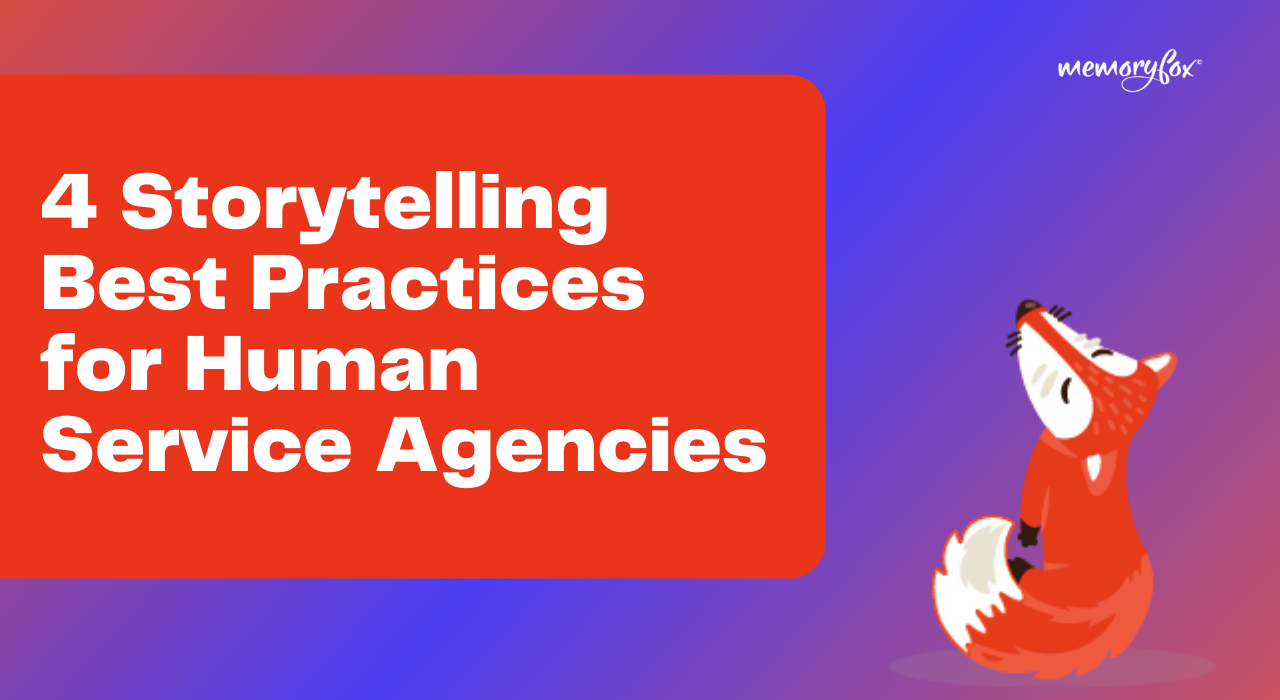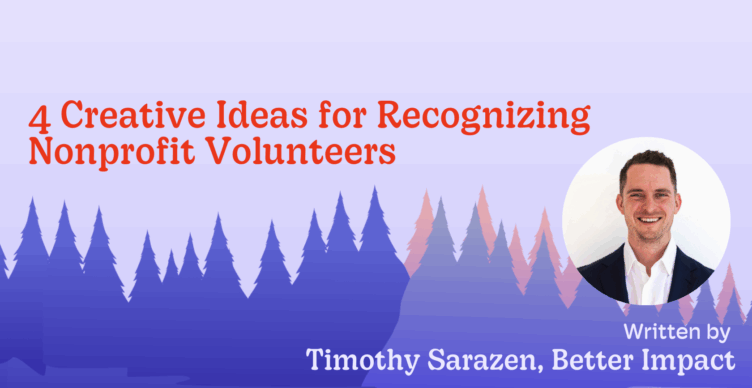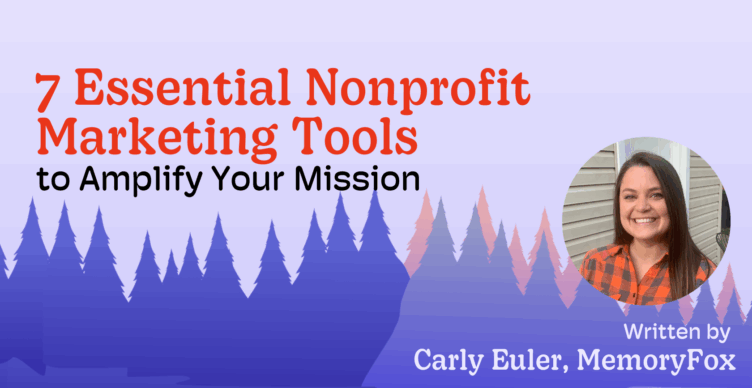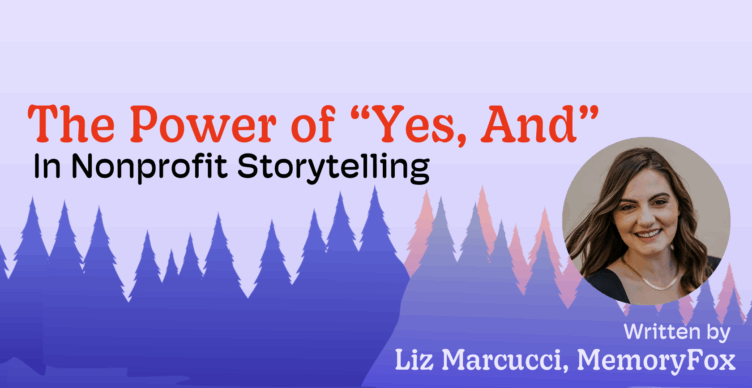4 Storytelling Best Practices for Human Service Agencies – and How to Make Yours Stronger

You’ve heard it before: storytelling can have a lasting impact on your nonprofit organization’s ability to tell your story, highlight your clients’ success, and demonstrate your impact. Humans are naturally more attracted to stories, especially stories with an emotional journey.
Stories are more memorable. Research shows we are 22 times more likely to remember a fact when it has been wrapped in a story (Forbes).
Storytelling is our way of teaching, explaining, influencing, and connecting. When we teach, explain, influence, or connect, we tell stories. By using storytelling in our nonprofit marketing efforts we are creating opportunities for increased engagement with our community, collaboration within our organization, showcasing the advocacy and innovation our work demonstrates.
We can use storytelling as a tool to help achieve both marketing, fundraising, and operational goals.
This is done in every capacity from showcasing a customer in our programs to telling the story of a volunteer working a food drive at a local nonprofit organization. When utilized in a strategic way, these stories can help attract new clients, spread awareness of the brand and services, connect with the community, or solicit new volunteers and donors.
In the world of human service agencies, storytelling isn’t just a tool, but it is an asset to help make a greater impact.
Storytelling in agency networks has the potential to go beyond fundraising or marketing goals: it has the potential to save lives and allow you to make a greater impact.
By telling stories of clients, donors, and families, the healthcare agency can increase awareness of services or specialties, build trust with current and prospective patients, solicit donations from new donors, and even foster a relationship with the community. In utilizing first-hand accounts and stories that use emotion to capture attention, a healthcare agency can take its marketing from a sterile and formal presence to something more authentic that connects with target audiences.
Unlike traditional storytelling marketing, agency-driven storytelling has to make an impact using factual representations and emotional journeys – while remaining sensitive to your clients needs and privacy.
Telling the stories of your patients or the experiences of your clients may not be as straightforward as the story of the impact that a foodbank has on a community or a customer using a product, but with careful planning, can be executed in a way that makes a significant impact on the agency and the lives of patients, families, clinicians, and the community. To show that the extra work to tell the stories in agencies is worth it, we’ve discussed 4 reasons why storytelling matters.
1. Focus on One Story
Stories speak to our brains in a way that helps us recall important information, especially if it is character-driven with an emotional impact.
A study conducted by Paul J. Zak, CEO of Immersion Neuroscience, shows that character-driven stories with emotional content results in “better understanding of the key points a speaker wishes to make and enables better recall of these points weeks later.”
When trying to tell a great story that demonstrates your impact, focus in. To focus on multiple things at once is a contradiction in terms. Either you’re focused, or you’re not.
Find a client who has an impactful story and is willing to talk about their journey with you. Get to know them and ask them powerful questions. Need help on generating great questions? Use our Storytelling Interview Questions Guide to help drive your narrative!
You can have multiple different client stories, donor stories, impact stories, but the best ones focus on one person or one family’s journey. A first-hand story of a client’s journey can capture the emotions of audiences and be used to promote a specific call to action such as donation, signing up for an email list, or volunteering for an upcoming event.
Remember to involve the client featured throughout the process of development and deploying your story. After you have the story curated, share it with your client to make sure they are being portrayed correctly and that you highlighted what they want.
2. Determine the Details and Define the Stakes
Once you have determined the hero of your story, start to dive into the details and define the stakes of the game. Find ways to bring the story to life by involving detailed descriptions of your client or where the story takes place. Details make your story feel human and can help the audience relate to their journey.
“Human memory is strongly enhanced by story, and there is a greater likelihood that we will retain the information shared through a story than information presented through detail points, which are more likely to be altered or forgotten.” (Healthleaders Media)
Additionally, every story must have stakes. What are the challenges they faced? What did they overcome? Where did they have a big ‘aha’ moment? When you utilize these key features of storytelling, you are building a narrative that is both engaging and relatable.
Remember to involve the client featured throughout the process of development and deploying your story. After you have the story curated, share it with your client to make sure they are being portrayed correctly and that you highlighted what they want (Read more about Ethical Storytelling here).
3. Demonstrate Your Impact
A first-hand story of a client’s journey can capture the emotions of audiences and be used to promote a specific call to action such as donation, signing up for an email list, or volunteering for an upcoming event.
To achieve fundraising goals, agencies can also feature donors’ stories. For example, take time to highlight your board members, donors, or volunteers. Explain why they chose to give to you and be involved in your mission.
In this video campaign for Hope West, we learn about why two donors continue to give to the organization. This campaign targets people in similar situations to the couple in the video, fostering a sense of connection and empathy with the audience in a way that encourages them to donate to Hope West.
Storytelling makes us feel connected with others and can build opportunities for advocacy within your community.
4. If You Don’t Plan, You Plan to Fail
Now that you know how to pull together a great story, you need to make your storytelling work for you.
How do you do this? Plan across functional teams. Involve storytelling from the inception of the roll-out of a new product or service.
When launching a new program or planning an event, think about what you envision the end result to be. Take time to talk with your program and fundraising teams to get on the same page with the goals of the event.
Take time to see how you can structure story collection naturally into the different stages of the client’s experience.
Want some more insight into how MENTOR New York builds its story collection into their programs? Listen into our conversation with Brenda Jimenez-Peralta, CEO of MENTOR New York where she breaks down storytelling, mentorship, and the importance of strategic planning.




